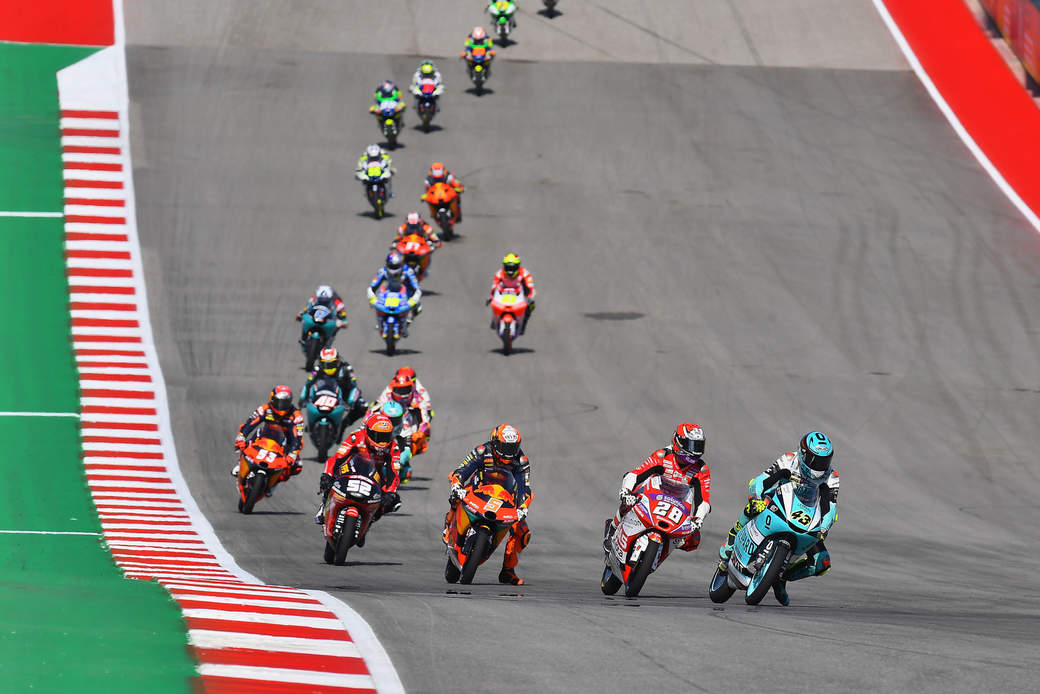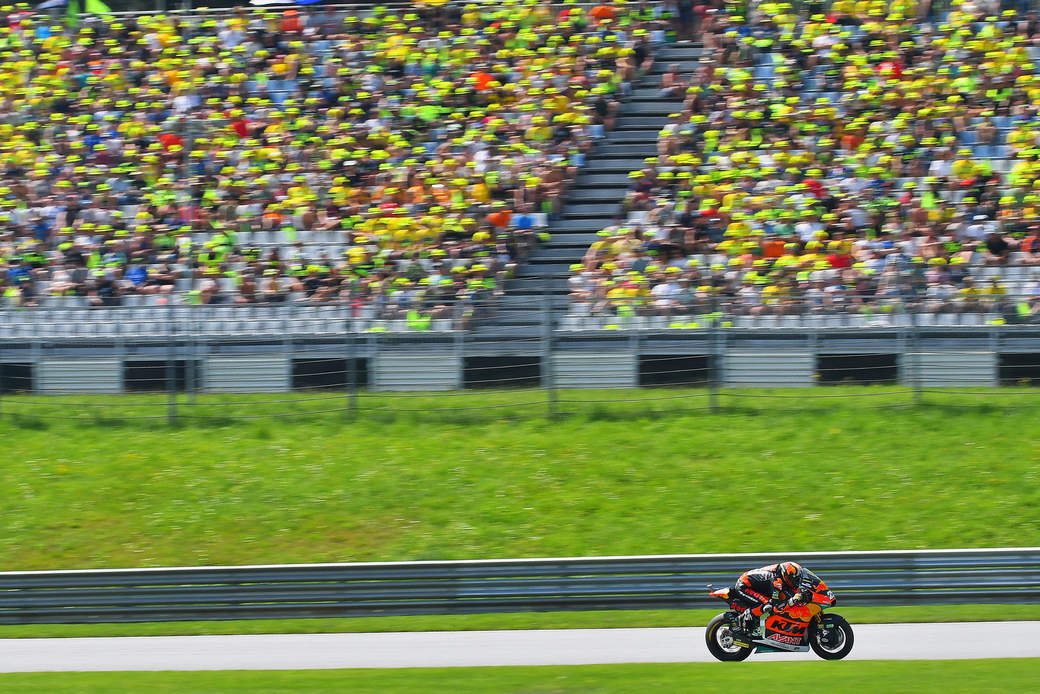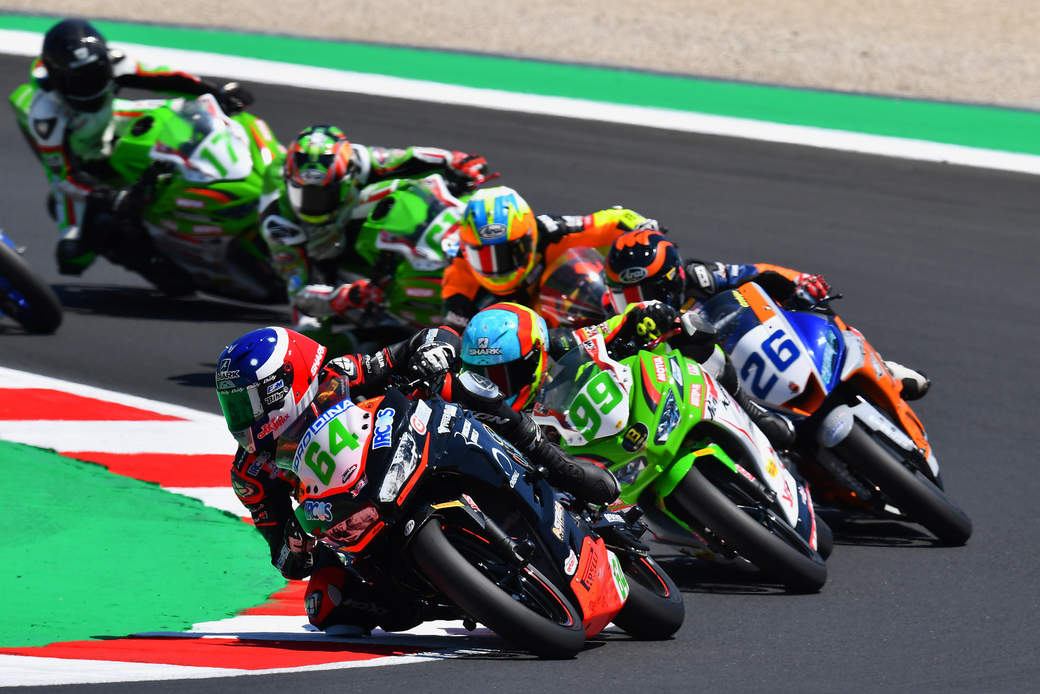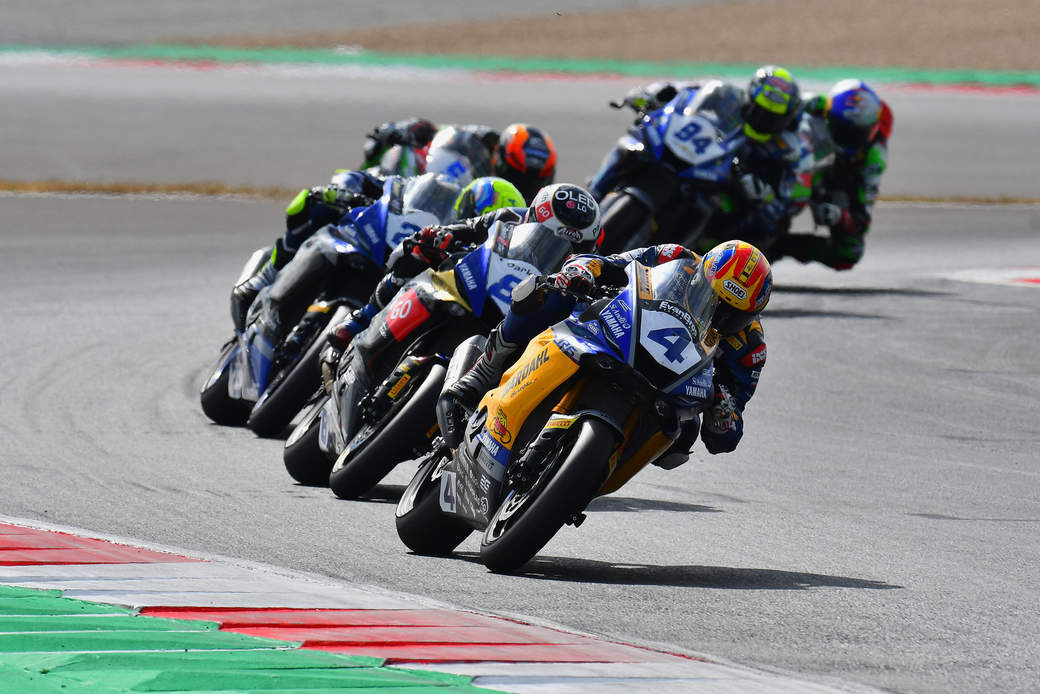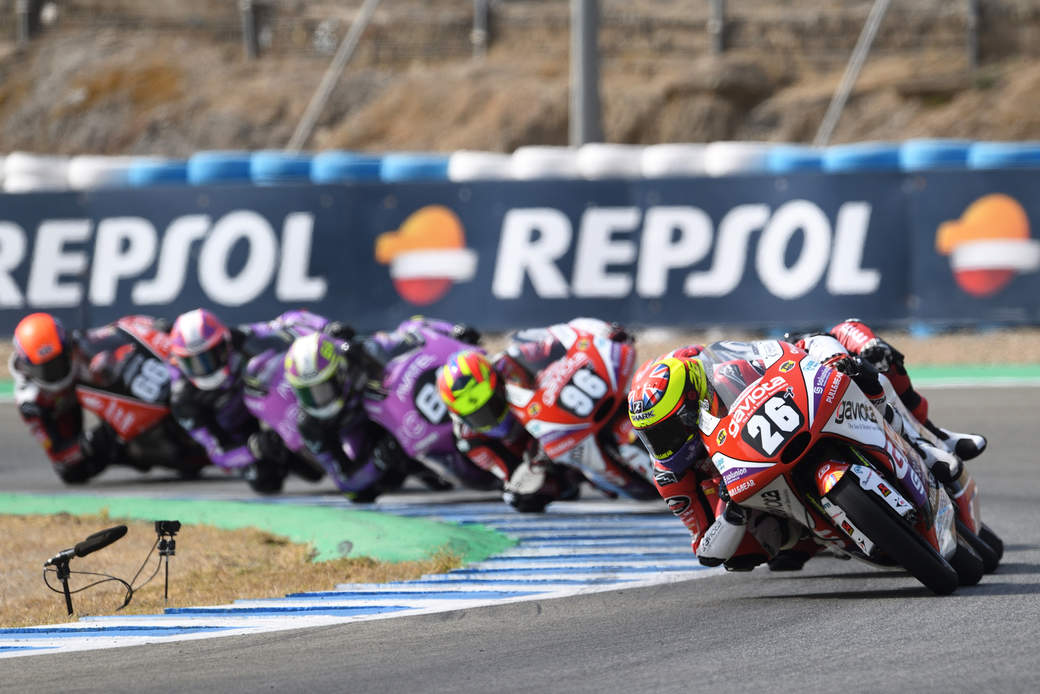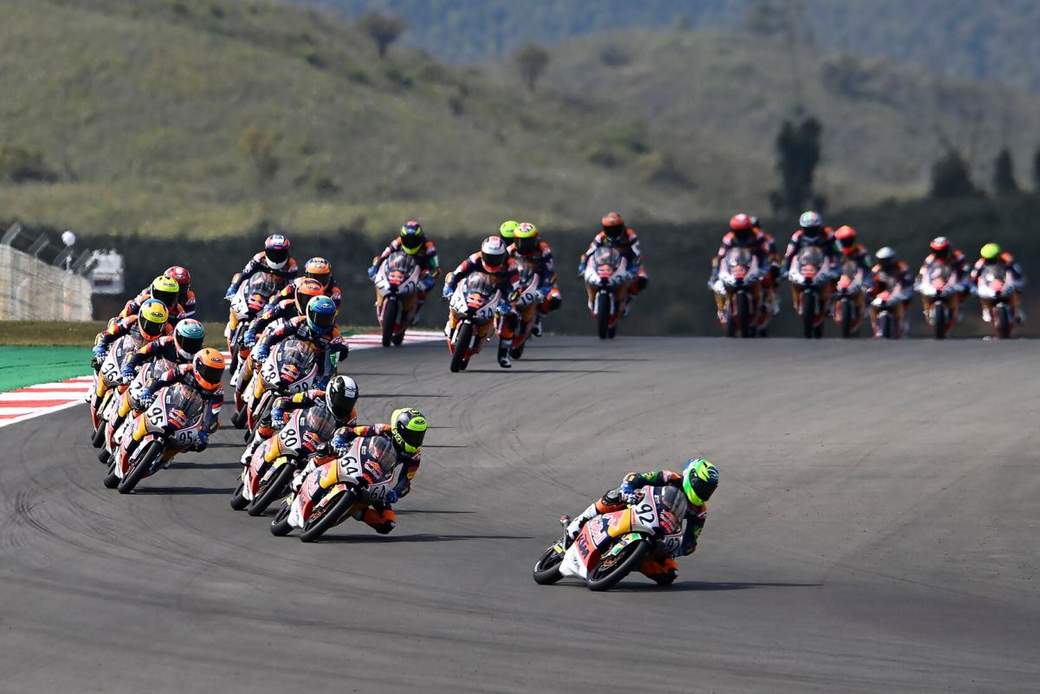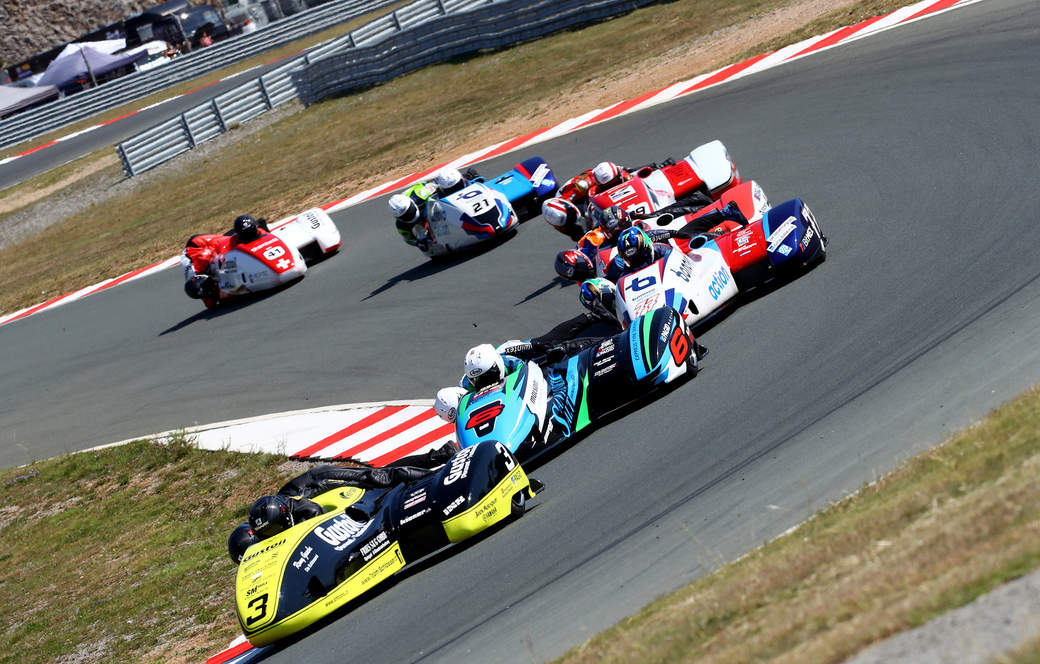Following the MotoGP permanent bureau announcement regarding important safety regulations updates for 2022 and beyond, the FIM can confirm additional safety updates for all FIM Circuit Racing Series. The expert panel comprising of FIM representatives (CCR, CTI, CMI) together with Circuit Racing World Championship promoters (Dorna, Discovery Sports Events, RKB-F1 Motorsport) and various other key stakeholders have been working continuously and tirelessly for several years to improve safety.
This working group has been directly responsible for bringing improvements to the circuit safety, including but not restricted to increasing run off areas; defining and creating new type of kerbs; setting out the criteria for applying anti-slip paints on circuits, defining new type of energy absorbing barriers; improving the riders’ riding gear requirements; FIM homologated helmets, and airbags etc...
These advances are always implemented fully understanding that the feeling of extra security experienced by the riders can adversely cause them to push the limits even further than before, and all decisions are taken with this careful balance in mind.
Equally all officials and stewards in all disciplines have become more aware of the importance of upholding and applying sporting rules and the associated disciplinary penalties where necessary and appropriate, with dangerous and irresponsible actions being suitably punished. With safety as the key consideration the Grand Prix commission has strengthened the scope of it rules over more recent years, with the findings and advances in these areas filtering down to benefit all types of circuit racing along with improvements in road safety too.
The working group has decided the implementation of the following measures as soon as 2022 to ensure the safest racing possible:
New minimum age for riders in certain categories in order to increase the level of racing maturity as defined below:
Minimum Ages
Moto3
Current: 16
Proposal 2022: 16
Proposal 2023: 18
Moto2
Current: 16
Proposal 2022: 16
Proposal 2023: 18
WorldSSP300
Current: 15
Proposal 2022: 16
Proposal 2023: 16
WorldSSP
Current: 16
Proposal 2022: 16
Proposal 2023: 18
FIM Moto3 Junior
Current: 14
Proposal 2022: 15
Proposal 2023: 16
Red Bull MotoGP Rookies Cup
Current: 13
Proposal 2022: 14
15
ETC, NTC, ATC, BTC
Current: 12
Proposal 2022: 13
Proposal 2023: 14
Sidecar
Current: 16 (passenger)
Proposal 2022: 18
Proposal 2023: 18
The reduction of the entry lists, to statistically reduce the probability of racing incidents will be applied. Hence, FIM World Championships classes will be reduced to a maximum of 32 riders (including wild cards) for Moto3, WorldSSP300 and Moto3 Junior.
In this regard the various Talent cups will be reduced to a maximum of 30 riders. The various commissions will meet in the very near future to finalise the new regulations and limits.
Raising the age limit for certain categories will enable greater parity between different countries and continents, helping to increase accessibility by levelling the playing field and ensuring each rider is able to gain similar experience plus to introduce more maturity in different categories around the World.
Rider equipment and communication.
It is widely agreed that riders’ safety equipment has improved considerably over the past few years and that further advances will follow as the research continues to make riders’ leathers, gloves, backs, chest protectors, boots, airbags and helmets more and more protective.
For three years now, helmets used in FIM World Championship events must be FIM homologated, this being the highest standards ever required in our sport. These developments are now available on the road to make the practice of motorcycling safer for everyone. Therefore, it is possible to say that it has never been safer to ride a motorcycle at high speed.
From 2022, airbags will be compulsory in all Sprint Circuit Racing FIM championships.
For the FIM Sidecar World Championship, tests are underway to determine whether the known algorithms are valid for passengers. These tests will make it possible to know whether the airbag can be used by participants as from 2022.
Additional safety has come through the evolution of technology and electronics that allows communication between the riders and the Race Management to be extremely efficient. The technology of our transponders, linked to the light/led panels as well as to the machine dashboards, allows us to communicate and exchange information more and more quickly between the marshals' posts, the Race Direction, the FIM Stewards and the riders. All of this contributes to a safer environment for all competitors. This kind of technology continues to evolve very rapidly and will allow us to further reduce the time needed to warn the riders, the Race Direction, our officials of an incident or a risk on the track.
Our different working groups, FIM / FIM affiliated Federations/ Promoters / officials / Riders / manufacturers continue to work together so that safety continues to improve on the track, and subsequently on the road.
FIM Communications
